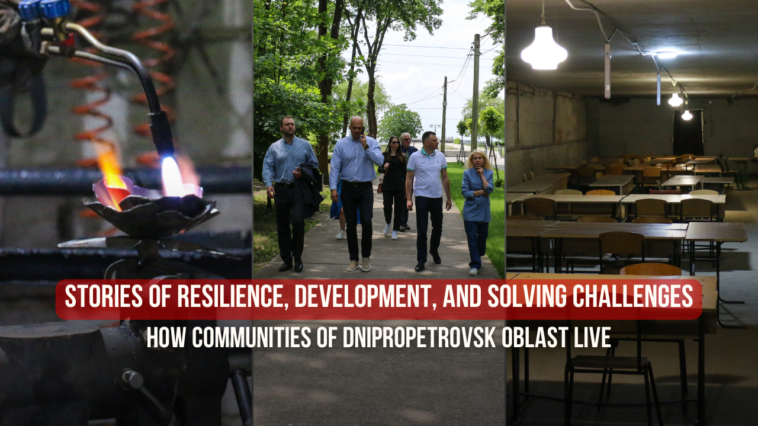Dnipropetrovsk Oblast is both relatively rear and, at the same time, close to the frontline. The war hit the region directly from a close distance, but besides that, it did serious damage otherwise, in the form of a lack of water, for example. The problem of water supply, which arose as a result of the explosion of the Nova Kakhovka Dam, became the key issue of the visit of representatives of the USAID DOBRE Program to Zelenodolska, Sofiivska, and Vasylkivska territorial communities.
In the new phase of the USAID DOBRE Program implementation, five territorial communities remained the Program’s partners in Dnipropetrovsk Oblast. The communities receive most of the assistance under the Emergency Response Project to overcome the consequences of the war. Almost 80% of the technical support is for the water supply. To date, these communities have received more than $70,000 worth of the aid: pumping equipment and control stations, pipes, and containers, in which water can be stored and delivered. Another important component is equipment that takes more time to purchase. However, communities will soon start receiving this type of assistance from USAID DOBRE too. Communities will also have financial support for development projects. They are already developing their youth-oriented and local economic development projects. During their visit, USAID DOBRE officers discussed plans for cooperation and overcoming new challenges with the representatives of local governments.
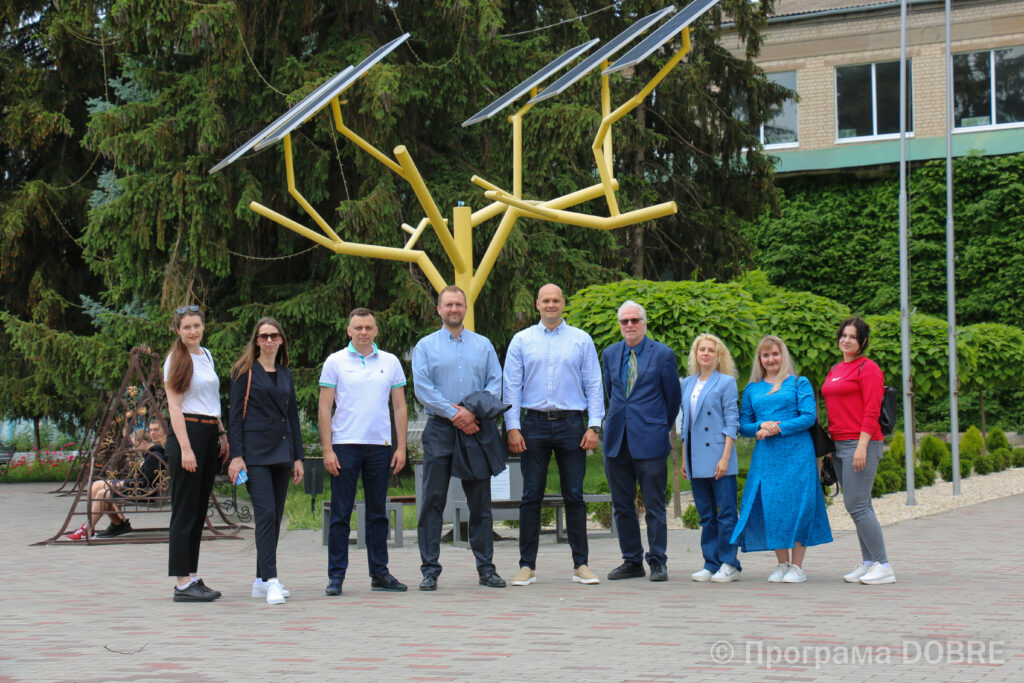
The stories of resilience, development, and tackling today’s challenges by territorial communities of Dnipropetrovsk Oblast are in the article below.
Zelenodolska Territorial Community
The community for safe sports
Zelenodolska territorial community’s priorities before the full-scale war were security, sports, and gardening. And the community was successful.
For example, the community made an unpopular decision – to remove the service of security guards in educational institutions. The city budget spent approximately 3.5 million hryvnias on salaries. After downsizing, the administration purchased video surveillance cameras and motion sensors with the saved funds. Cameras were installed in institutions and around the city. A volunteer battalion monitors these cameras. It also receives signals about emergency events throughout the city and coordinates appeals. Conventionally speaking, the local “911” responsible for security operates in Zelenodolsk.
For the community to be clean and green, the local authorities created the landscaper workplaces throughout all starosta-districts (any settlement in the community except the central one.) These people organize tree plantings and look after plants. Local residents regularly gathered for actions and organized meetings to participate in the community’s improvement. They also worked in the central park, clearing all the thickets and treating the trees.
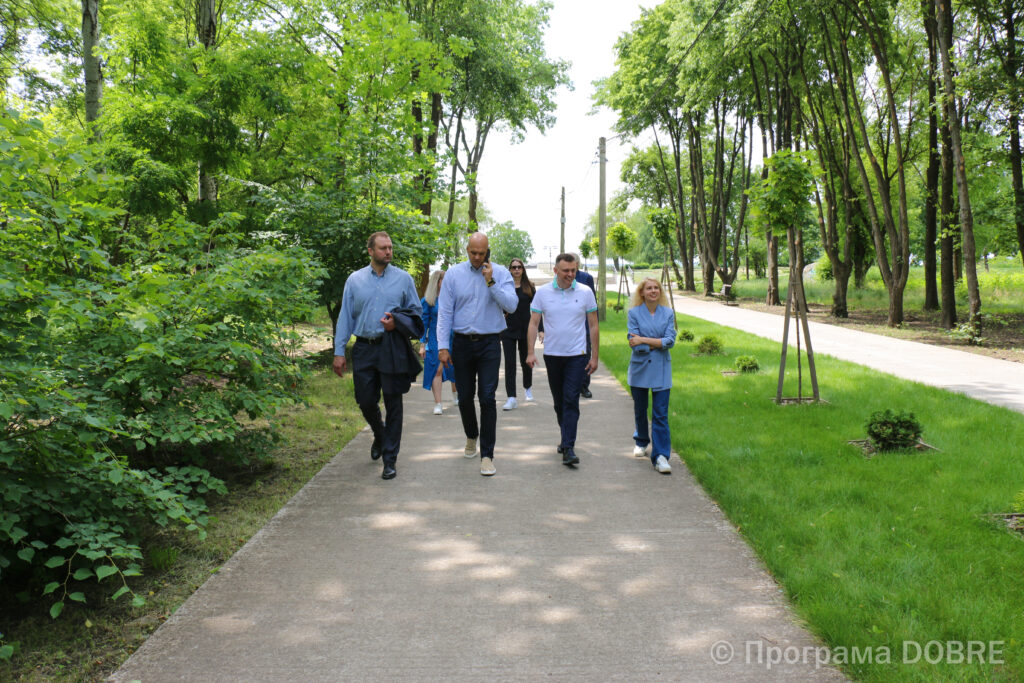
The community created new children clubs and improved the existing ones. For example, with the support of the USAID DOBRE Program, a climbing wall was opened in Zelenodolsk.
At first, there was only one coach, and then they had to add a vacancy and train new specialists. There were four groups of children in the community before the full-scale war. And they came here – from all over the Oblast.
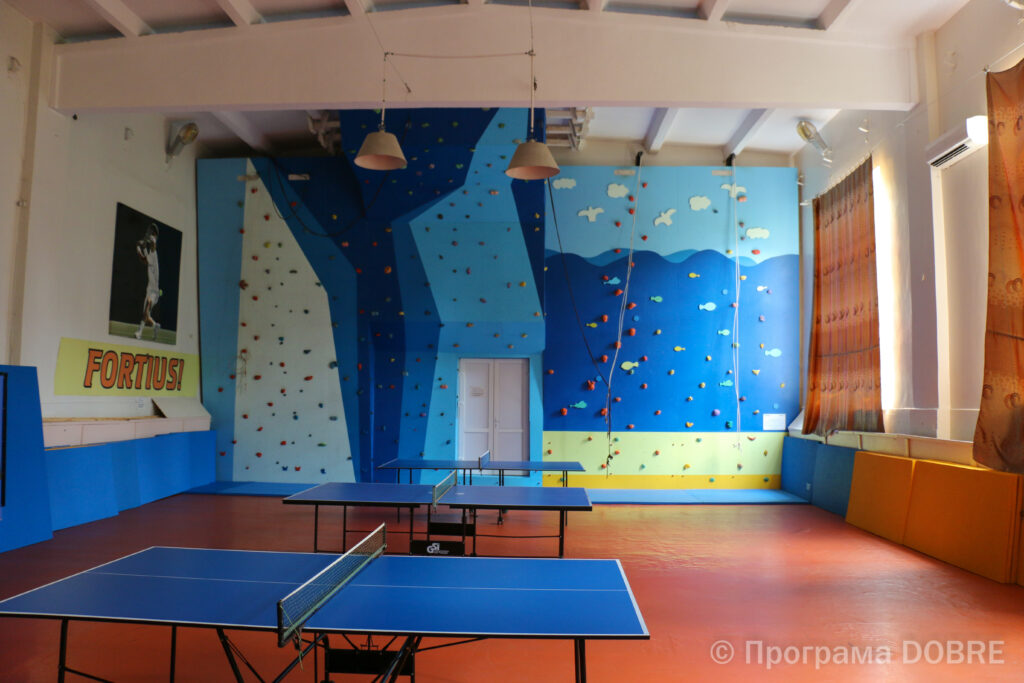
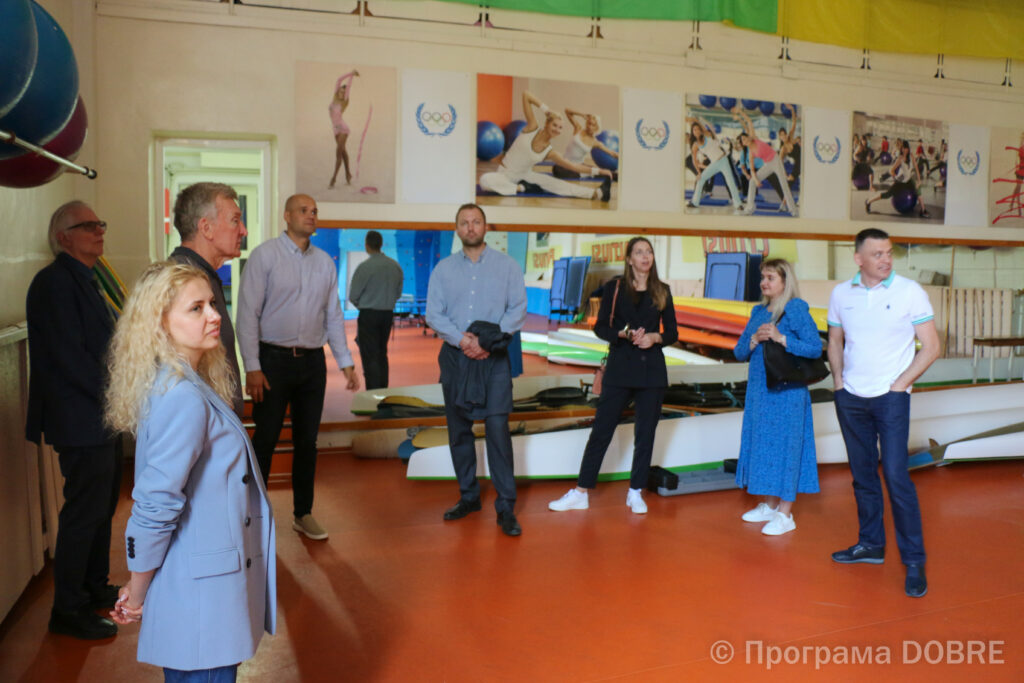
When the full-scale war started
When the full-scale war started, the community had to leave development work and stand up for the defense of their home.
“We found a way to take out women and children – we asked for buses and other transport. We had to secure our rear so that we didn’t have to turn back and worry about our families. We weren’t going to leave here ourselves,” recalls Dmytro Nevesely, head of Zelenodolska community.
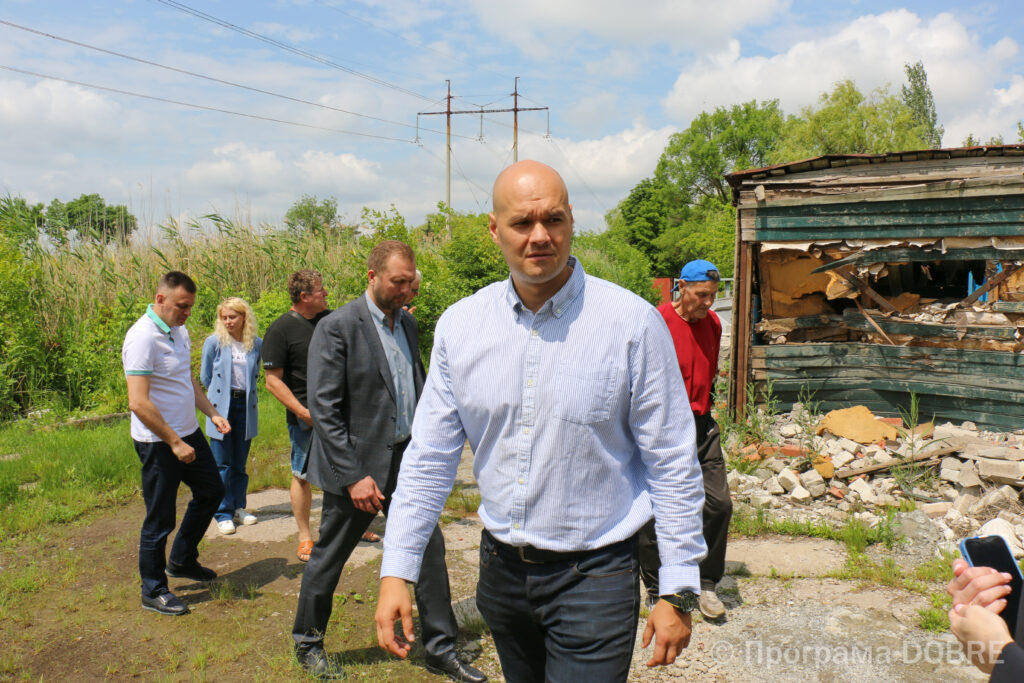
People, who needed help, began to leave the occupied part of Ukraine. At that time, it took an ambulance more than an hour and a half to drive to our community. Therefore, people took the wounded and went to meet the medical staff.
“In March, people from Kherson Oblast started arriving to us. Some were wounded, on the snow, with no transport, walking barefoot. A thousand people, maybe more. With wheelchairs. They supported each other. They even carried people in beds – those who could not walk,” Dmytro Nevesely says.
Now the community’s residents also help to patrol the territories of Dnipropetrovsk Oblast so that people do not collect dead fish after the explosion of the Nova Kakhovka Dam.
“It is important to know that our people are indeed a community and not everyone for themselves,” says Dmytro Nevesely.
Rebuilding and welcoming back their residents
“This is all from the apartments of my employees. It is only a small part”, – the head of the community points to a small exhibition of debris, placed in the City Council.
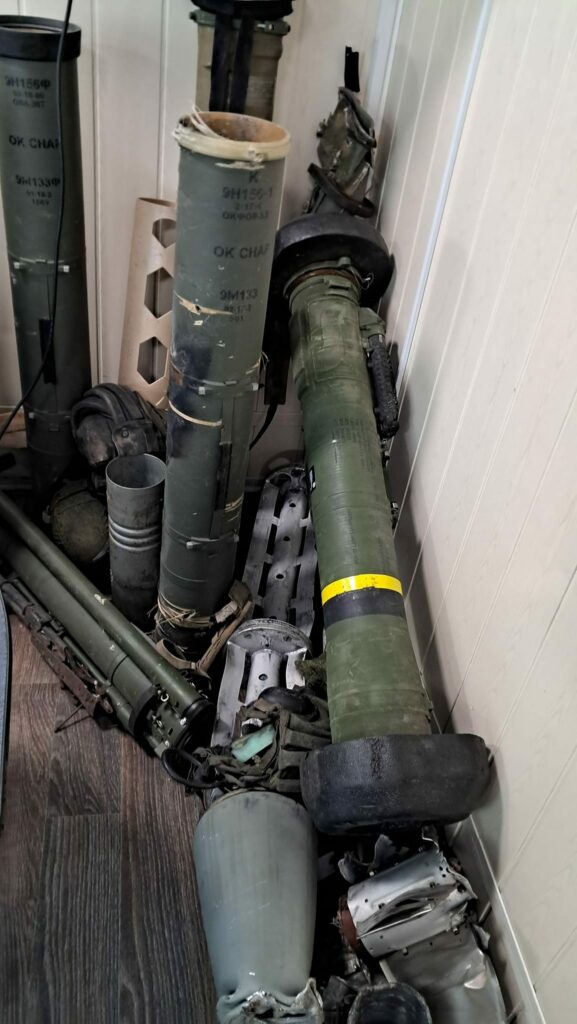
During Russia’s war, 73 out of 104 apartment buildings were damaged. Almost 1,500 private buildings suffered various degrees of destruction. Eighteen civilians died (including one child); 68 others were wounded.
Even at the beginning of the full-scale war, 70% of the population evacuated. Almost all have returned home because, luckily, these people had where to come back to. The city authorities have undertaken property repairs for citizens, who wanted to return. Partner organizations were involved in purchasing materials. The local utility company, which had already received tools from the USAID DOBRE Program under its Emergency Response Project, helped make the repairs. Now 90% of residential buildings have been rebuilt.
“We were under fire every day. We have a lot of destruction: both infrastructure and roads. But our priority from the beginning was housing reconstruction. We can repair the road, but why do we need it if nobody walks it? We brought people back. Instead of the sounds of shelling, we hear our children,” says Dmytro Nevesely.
The shellings also damaged the city park. However, people who work with seedlings and flowers set about restoring the place, managing to share flowers with other communities that have suffered from shelling. They have already distributed more than 4,000 paulownia seedlings.
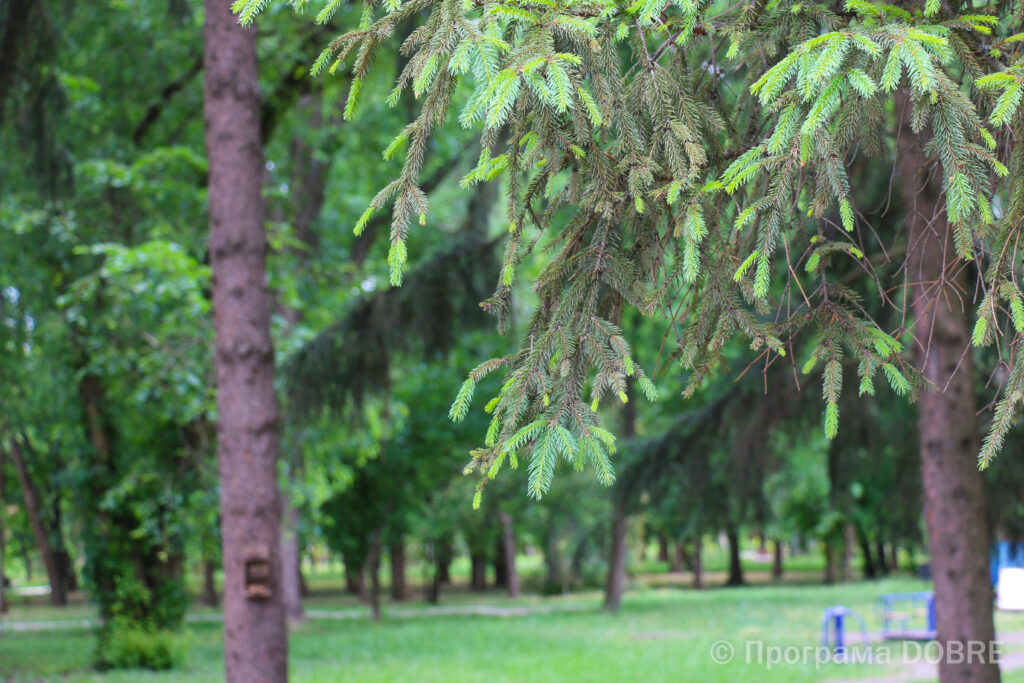
Citizens were able to hide and save the equipment of the rowing station. The hardware USAID DOBRE helped purchase in the first stage of its program implementation is waiting for the young athletes. The building was not so lucky – it took the first blows of shelling. However, repairs were also partially made here.
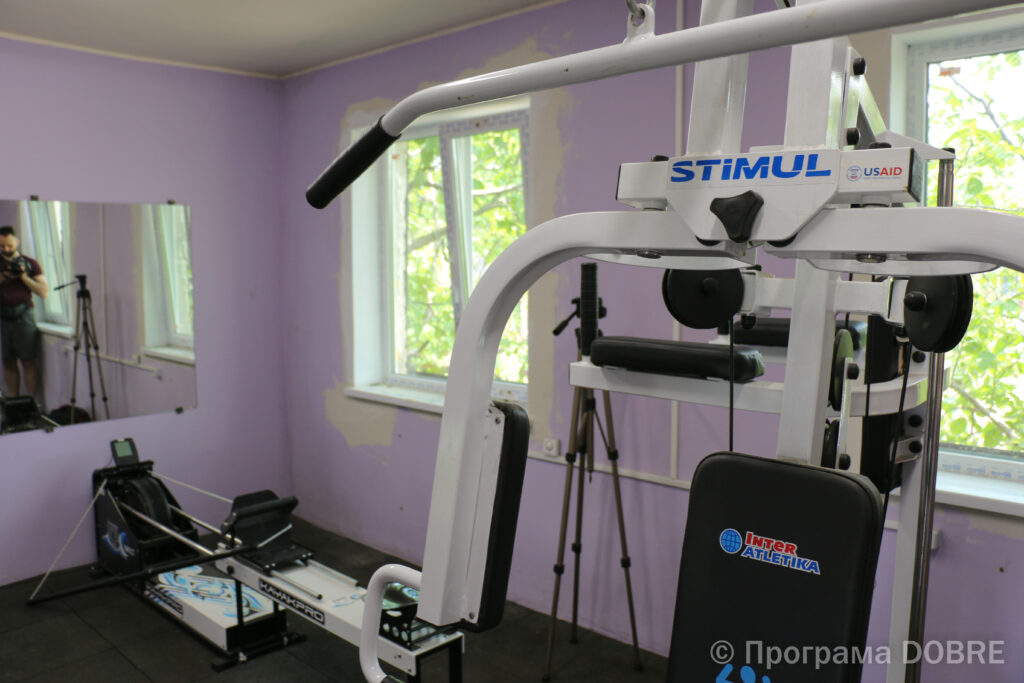
The stadium and sports school came under fire. However, only the holes from the debris on the walls remind us of this because the windows have been completely replaced, and the territory has been cleaned.
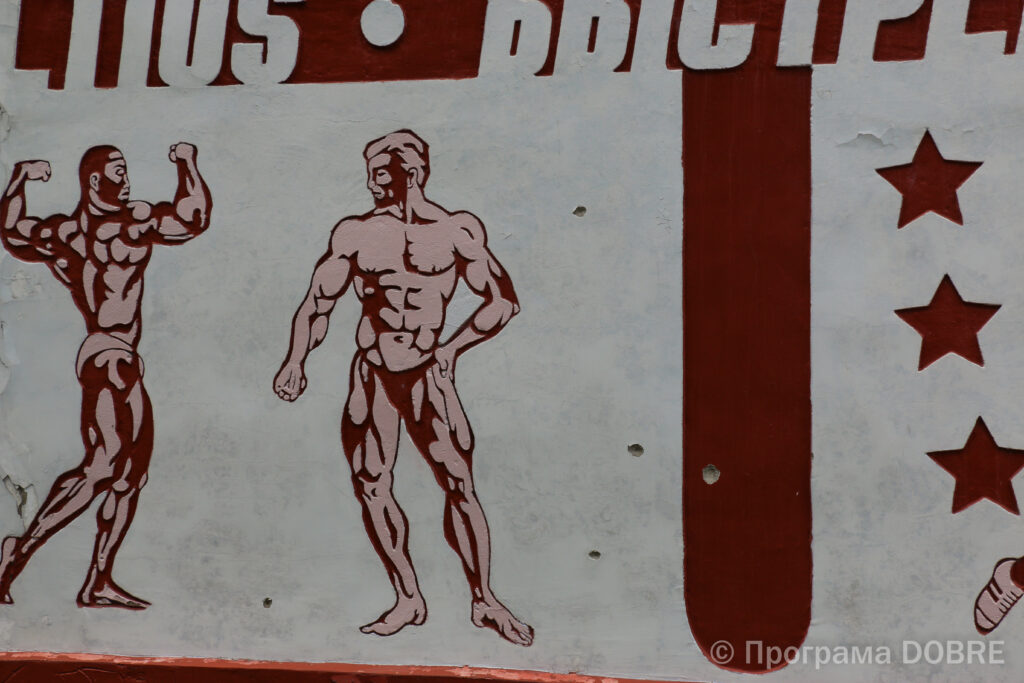
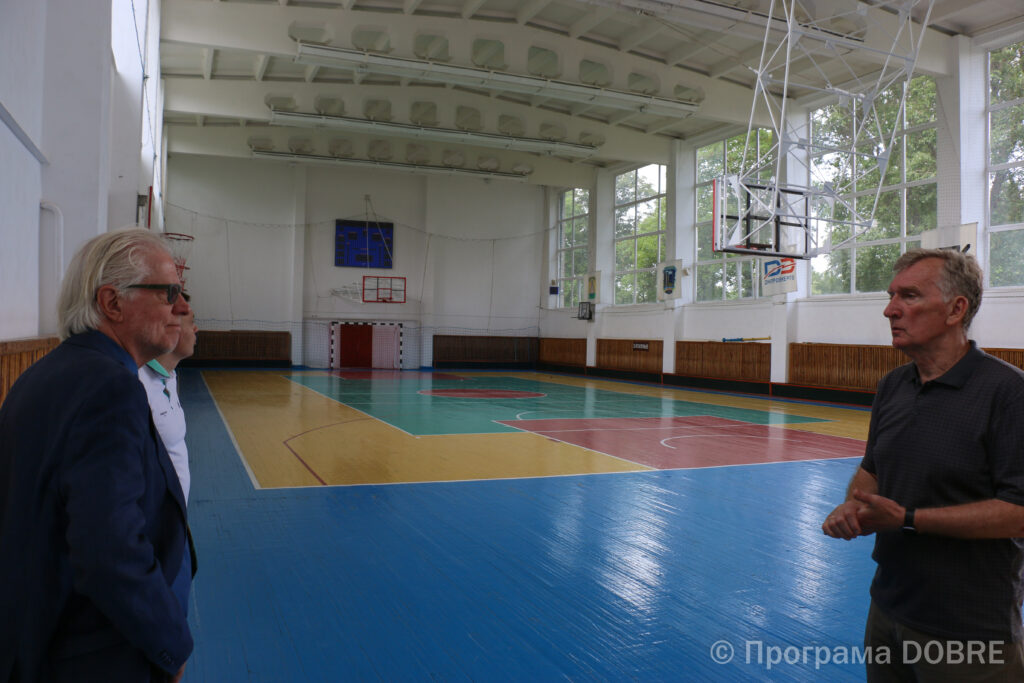
It seemed that the community had recovered from the first blows of the war and could return to development. But Russian troops destroyed the Nova Kakhovka Dam. And in Zelenodolsk, there is a new urgent problem – water.
Water problems
Prior to the Nova Kakhovka Dam destruction, two pumps drew water from the Kakhovsky Reservoir. One of the devices supplied technical water through the Kryvyi Rih Canal to the Zelenodolsk Reservoir. An additional filtering station located in the community purified water and brought it to the population. Now it will last for a short time in saving mode. But it is needed by the local thermal power station, which provides the community with electricity and heat. It is impossible to cross the critical limit necessary for the operation of the enterprise. In addition, there is a nuance with the saving mode in the community.
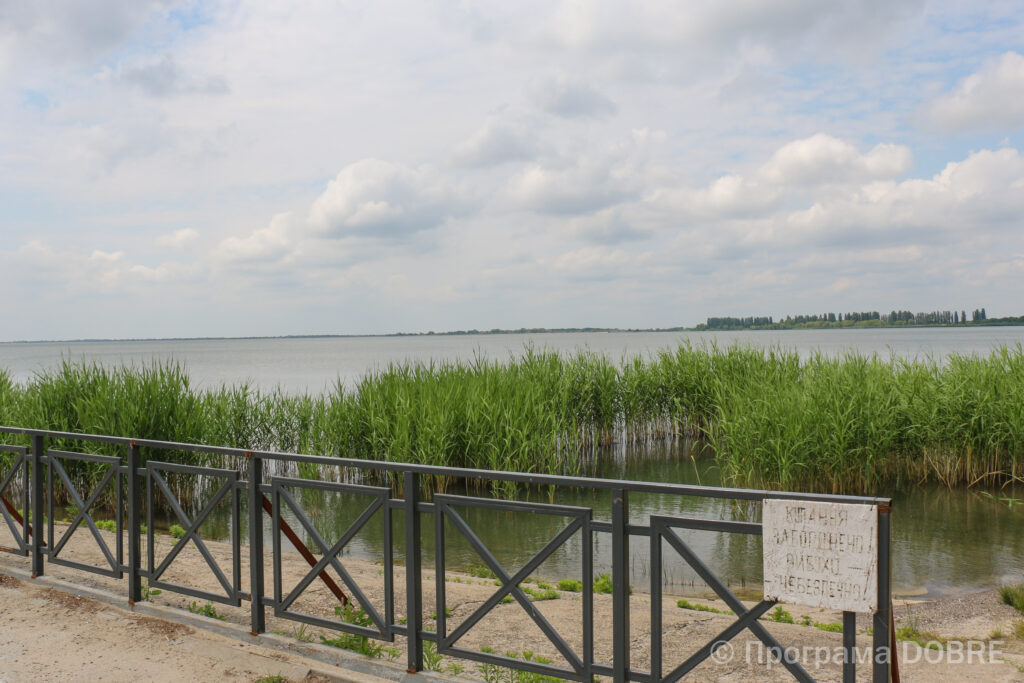
Currently, for economical use, the water pressure has been reduced. It is impossible to turn it off completely and provide water supply services on schedule. Empty ducts would simply collapse under constant water hammering. They barely do their job anyway. The ground in Zelenodolsk quaked from the explosions, and the pipes laid back in the 1970s trembled too.
There are several wells in the community. One of them – in the village of Marianske – has already become shallow because the disaster also affects the groundwater. To date, in addition to the global solution to the water problem, a temporary solution is also necessary – to bring it to people. That requires transportable modular containers on a wheelbase that a car could pull.
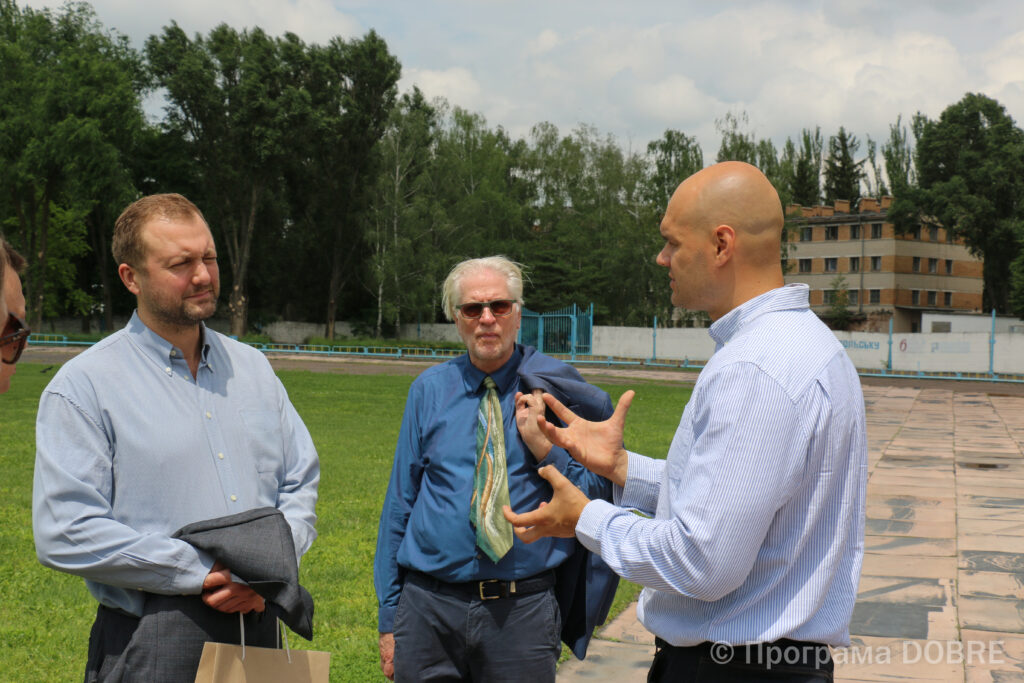
The village of Velyka Kostromka has an operational well, which USAID DOBRE helped to equip. But it is not known how much it will be enough. At the moment, it has been working as a pumping station, allowing people to collect water.
The only option for Zelenodolska community is to look for the water underground. The process is complicated because the city and some villages stand on the granite or have rocky soil. That makes the search significantly more expensive and does not guarantee the result.
But Zelenodolska community, both during the defense and now, does not give up and is looking for opportunities to solve current challenges and continue its development. Despite everything, the community plans its future projects, dreaming of being safe and comfortable for life.
Sofiivska territorial community
Learning and developing
Sofiivska territorial community is comparatively at the rear. Before the full-scale war, it sought development, primarily to improve education and improve comfort in the community. There are two hospitals, a branch department of the State Emergency Service, the police, schools, kindergartens, and an administrative service center. The main revenues are land tax and personal income tax. The community also actively engages international partners and develops their project proposals to all possible competitions and grant-supported contests non-stop, attracting support from partners, including the USAID DOBRE Program.
“Thanks to the DOBRE Program, we learned a lot. In particular, how to attract and use funds and apply to project calls. We started working with many other programs, where we receive grants and develop our community. The DOBRE Program opened our eyes: today we know, where to find funds for successful development,” says Petro Sehedii, Head of Sofiivska community.
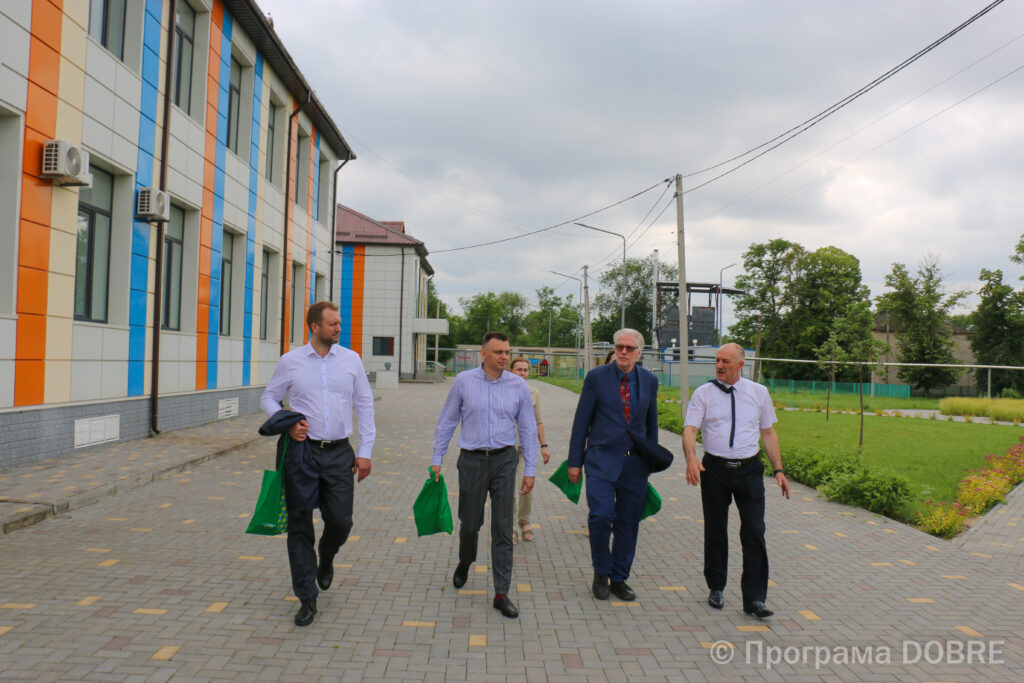
The hub school was recently renovated – during 2018-2020. With the help of regional funds, specialists of the local self-government made major repairs and updated all equipment at school. Neither do they forget about extra-curricular activities. And certainly, the active local youth would not allow it to be forgotten. Currently, the youth center has been working in the community. The USAID DOBRE Program provided its technical assistance to equip it, and the community repaired one of the rooms of the Center for Creativity. Thematic meetings take place here, where everyone can find something they like. However, to date, there are almost 50 active young people in the community, that is why one room is not enough for them.
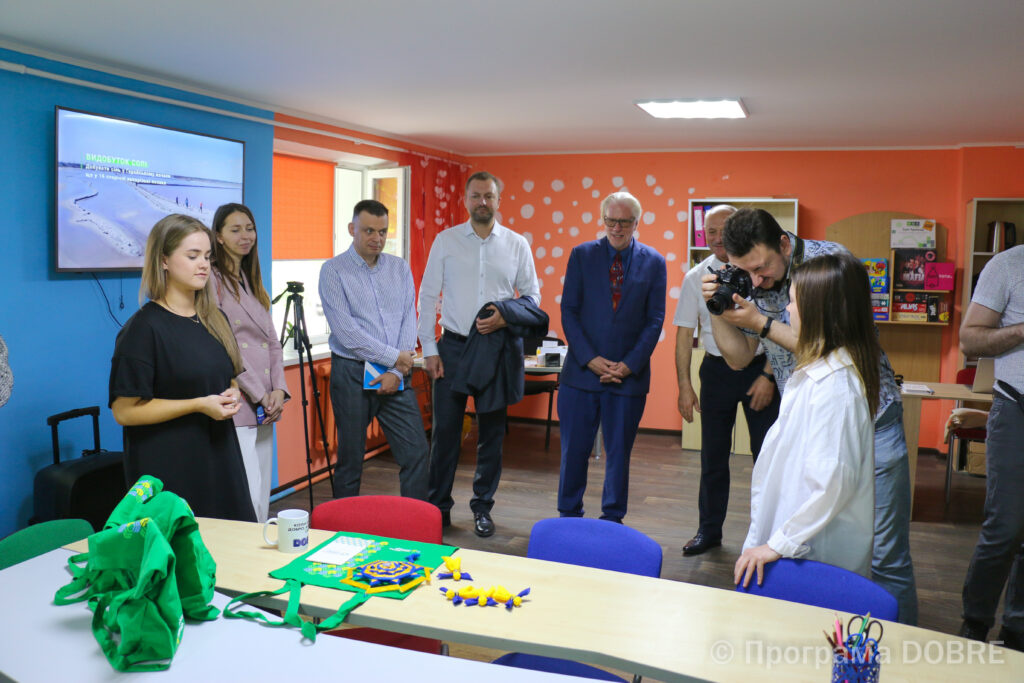
In the second phase of cooperation with USAID DOBRE, Sofiivska community would like to create a new youth space to satisfy the modern needs of young people.
The Shevchenko Boulevard in Sofiivka was built properly. They laid tiles, following the example of American communities, the experience of which Head of the community, Petro Seghedii, brought home from the study visit, organized by USAID DOBRE in 2016. Waste bins, park benches, “the tree of love”, and other decorative adornments were all created by their local blacksmith.
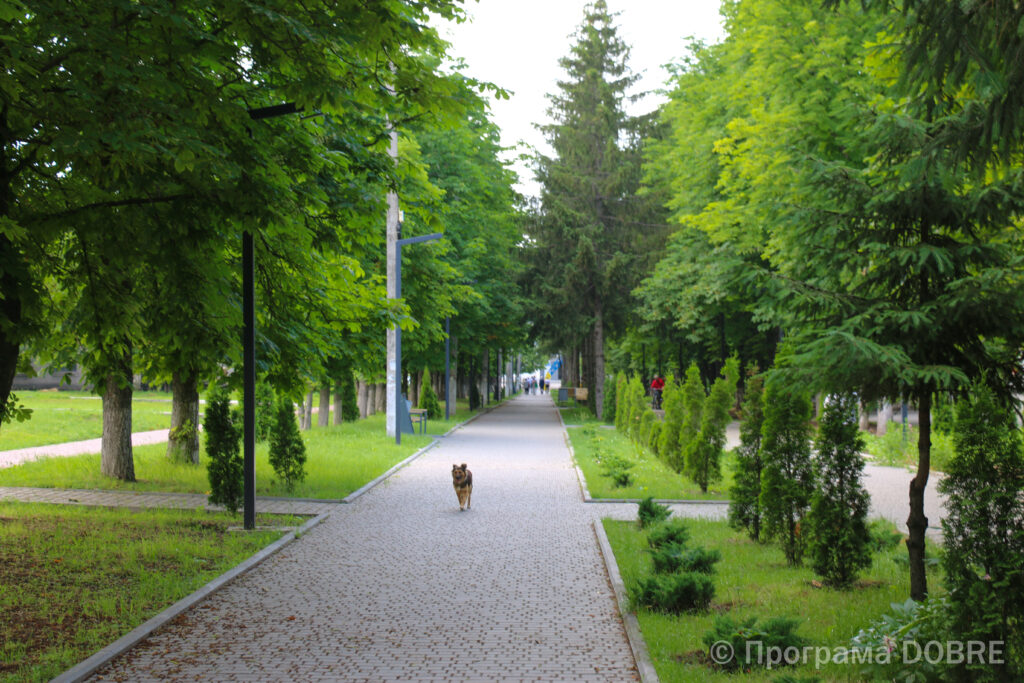
The blacksmith’s workshop: a story of one dream and an effective project
The abovementioned blacksmith’s workshop is one of the community’s projects, implemented jointly with the USAID DOBRE Program. The blacksmiths are working in the garage. Until the recent, these premises were not in use, being on the communal balance sheet.
The story of this blacksmith’s workshop is full of good coincidences and, of course, purposeful efforts. One day, an ordinary resident of the community, Viktor Haponov, who at that time worked as security guard, came to Head of the community with a question, whether there was an opportunity to work as a blacksmith. He said that he already dreamt of this job. The man inherited the art of blacksmithing from his grandfather. As a young man, he watched his grandfather’s work and tried to catch his every approach. Although his destiny led him to a different professional path, Viktor did not forget about his old passion. He watched videos and maintained his skills as much as possible, so that one day he would not miss the opportunity to fulfill his dream.
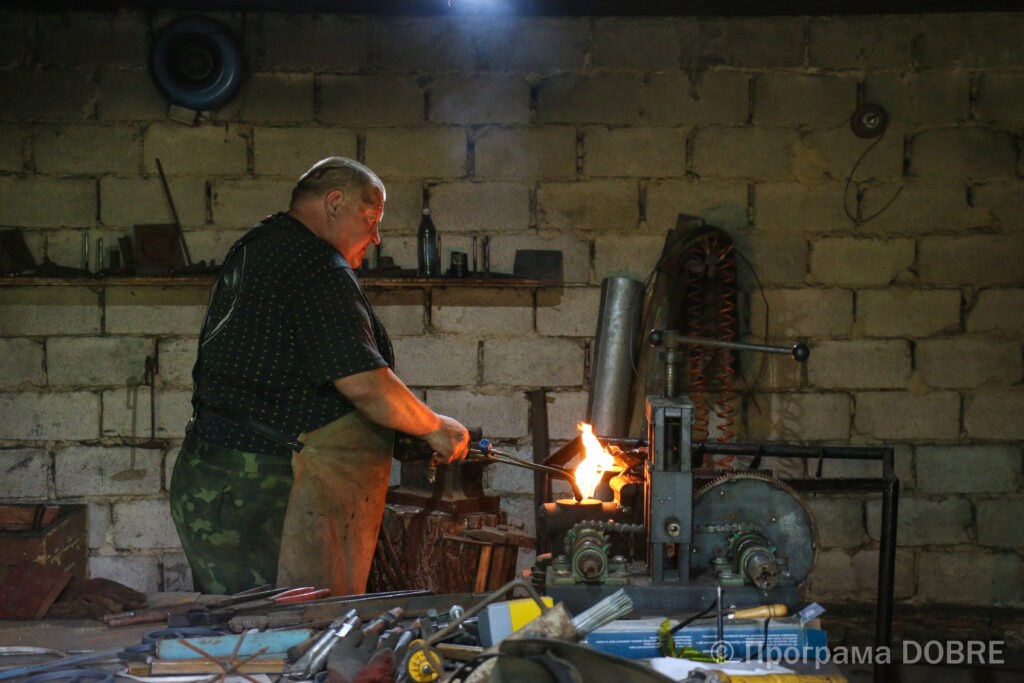
Right then, the community was looking for an idea for a local economic development project, which it had planned to implement in cooperation with USAID DOBRE. Here all the signs came together: the idea was promising, the premises – available. The community made repairs, and the Program provided its support to purchase the necessary equipment.
At first, the blacksmith’s workshop worked as part of a communal enterprise, and later they transferred it to the improvement group, which is subordinate to the executive committee of the Sofiyivka City Council. These days, Victor Haponov has been producing decorations for the community’s needs: park bins, trash cans, decorative elements. He also takes individual requests: people order gates, fences, household appliances, signs for their houses with numbers, souvenir products. In addition, the blacksmith passes on his knowledge to the younger generation.
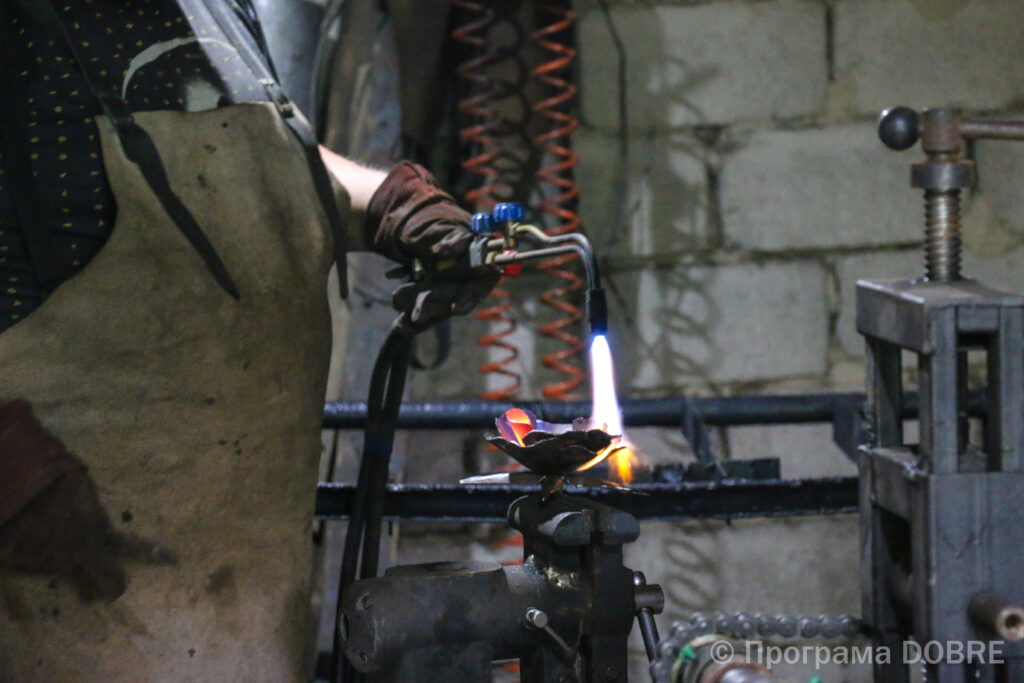
Plans and priorities
With the full-scale war, about 1,000 people left Sofiivska territorial community. It is not that big an amount compared to other settlements, closer to the front line. Moreover, after 8-9 months, almost everyone returned home.
Sofiivska community also became the shelter for almost 1.5 thousand displaced persons. Around 900 of them decided to stay in the community. Now they rent houses from locals. Several families settled in the dormitory for internally displaced persons, which Sofiivka opened in 2016.
Before the war, the community had driveways and water supply services as its priority. Many roads of regional importance pass through the center of the village. However, even with a strong desire, the local government does not have the right to repair them. With the help of the DOBRE Program, they were able to equip sidewalks – to make it possible for pedestrians to walk safely.
They dreamed of replacing the old metal pipes with plastic ones to improve the water supply service. Firstly, it will allow water of better quality to be delivered to residents. Secondly, of course, to avoid regular rushes that arise after any change in pressure. They almost found an opportunity to buy a welding machine for plastic pipes and an emergency car. But the war interfered with the community’s plans. And the problems with the water supply after the explosion of the Nova Kakhovka Dam only worsened.
What is the situation with water in Sofiyivska community?
The community’s central estate – Sofiivka – is almost 40 kilometers from Kryvyi Rih. The community received water from there. A single 34-kilometer thread provided water to the town and 15 out of 29 villages. The community received already purified water and stored it in concrete tanks. From there, they delivered it to residential areas. In the Kryvyi Rih district, Sofiivka is the most remote settlement, hence the community has problems with centralized water supply.
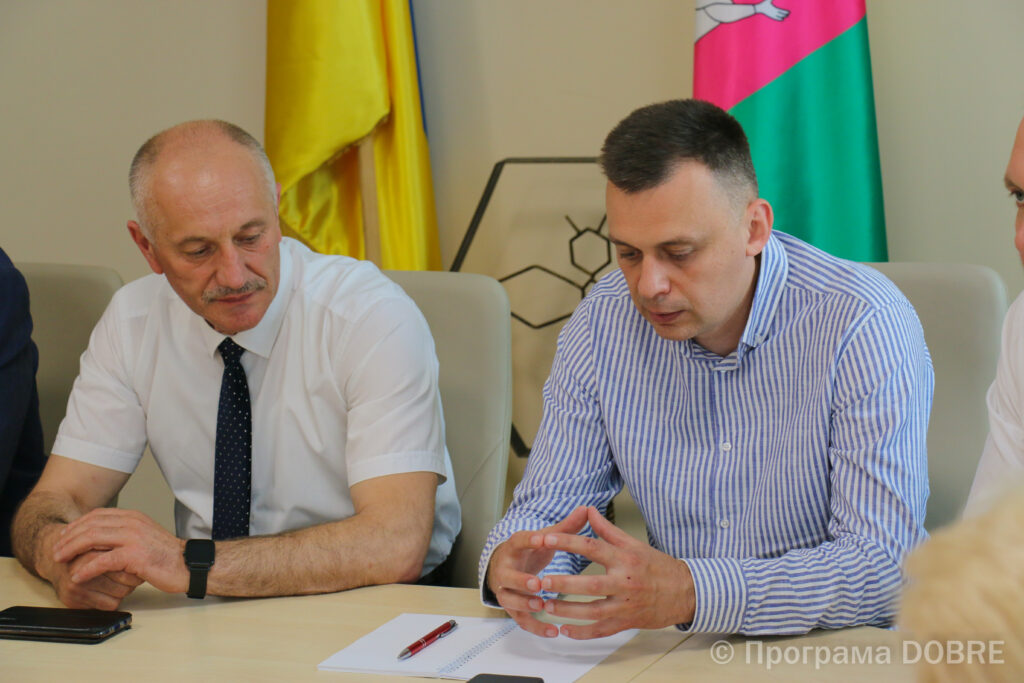
The community’s own water resources are, to put it mildly, limited. The water research findings reveal the salt level exceeds the norm by more than five times. The local water also has a bitter taste due to its mineralization. Some households have wells, although many are neglected and have not been checked for a long time. However, even from functioning wells, it is impossible to use that water for technical needs, not to mention for cooking. Local residents say that if one waters their garden with the water from the well, the ground gets immediately covered with salt and turns white.
One of the villages has a well 38 meters deep. Currently, it has been providing water to about 2.5 thousand people. The USAID DOBRE Program assisted technically to equip it. The exact water supply there is unknown, but the throughput capacity of the treatment system limits the volume of the extracted water. Only the reverse osmosis technology can handle Sofiivka water – the system passes water under high pressure through a special membrane that retains dissolved substances, bacteria, etc. After such purification, the water gets a specific taste because it lacks minerals. However, it is completely safe. And Sofiivska community does not have any other options. The technology of the reverse osmosis is not cheap – about 80 thousand dollars for one system to purify 100 cubic meters of the water daily. Sofiivka needs, at least, four more to provide the community with the water. The community cannot buy it for itself yet. Therefore, it is looking for support from partners.
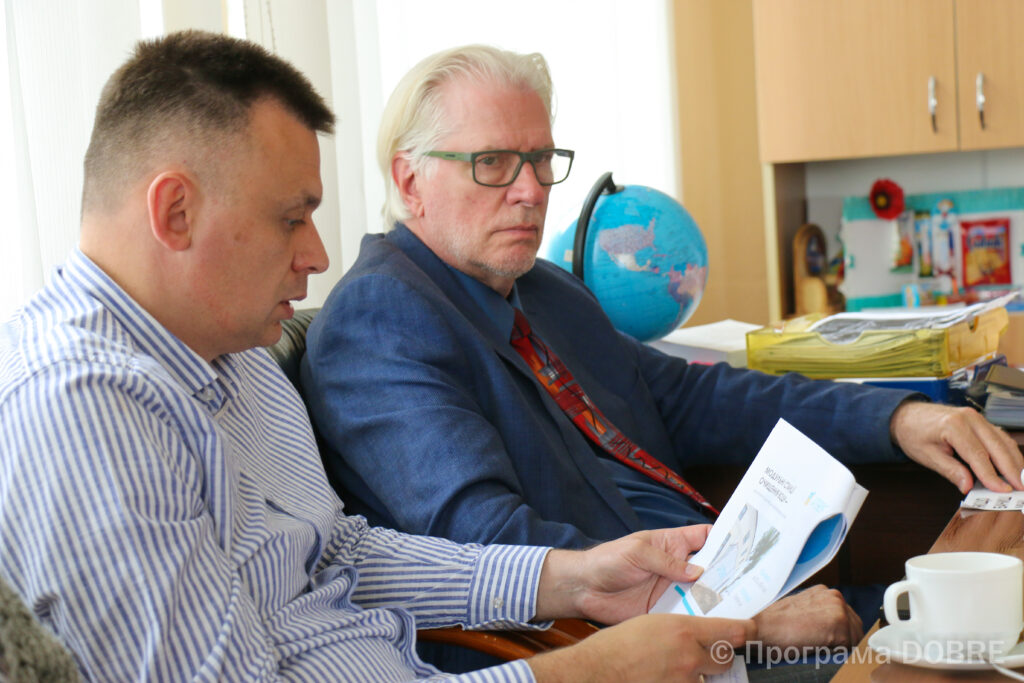
Vasylkivska territorial community
Agribusiness instead of enterprises
Vasylkivska territorial community lies in the southeastern part of Dnipropetrovsk Oblast. Not far, there is the Oblast’s border with Zaporizhzhia and Donetsk Oblasts. In the latter, the hostilities have been ongoing since 2014. So even then, the priorities of Vasylkivska community were adjusted by the war. Big business investors, who build factories and enterprises, stopped being interested in the community. Therefore, the only option to attract business in Vasylkivka is agriculture. The community is rich in fertile land, whose taxation funds build up the budget. The Land Management Department uses the online map, where all plots are indicated. Employees have quick access to the entire database with information about the territories, which simplifies the procedure of providing the land plot for use. The community created this geoportal with the map with the assistance of the USAID DOBRE Program, which helped it with spatial planning.
“The war in Ukraine has been going on since 2014, and territorially, we are close to it. That’s why big investors don’t come to us to build factories. But we are an agricultural region with a lot of fertile land, so entrepreneurs come to rent plots for cultivation, gardening, etc.,” says Victoria Varava, Development Specialist of Vasylkivska community.
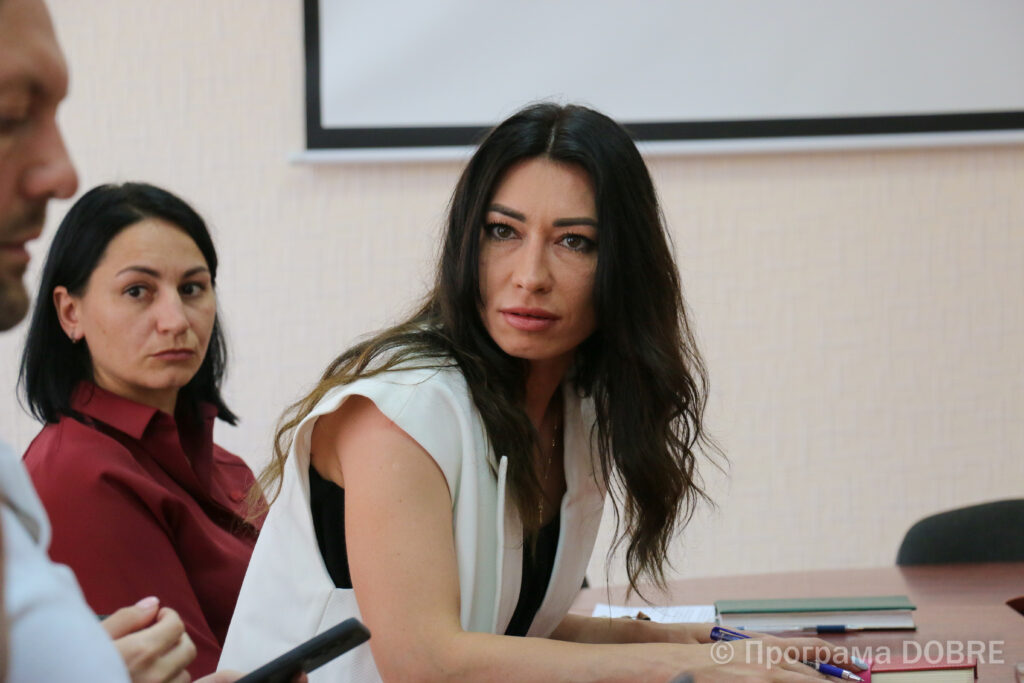
Since enterprises are not created, additional jobs do not appear soon. However, people are engaged in gardening, growing vegetables, etc. To help people increase the cost of their produce, the community started working on creating a freezing shop. Another planned area of business development is mushroom cultivation. These mushrooms are unpretentious to growing conditions and do not require special agricultural techniques. However, the war, already in its full scale, has again interfered with the community’s plans.
Not everything managed to achieve due to the war
Before the full-scale war started, the community worked on its local economic development to have resources to repair schools and kindergartens – to improve sectors of education and sports. The local authorities also tried to execute waste management initiatives, but did not have the time. They had to reformat the business, and some other endeavors (such as the freezing shop), they did not have enough time to implement.
The park, whose reconstruction began at the expense of the regional budget, is also unfinished. According to Victoria Varava, plans for similar parks were developed for the communities of the entire Synelnykove district. These plans implied the complete reconstruction and zoning of the territory: for shopping, and recreation, etc. However, they only had time to update the part of the sidewalks. There is a free playground in the park, which young people would like to use. They would like to make a creative recreation area there with the support from USAID DOBRE – they are developing a detailed project proposal to apply for its funding.
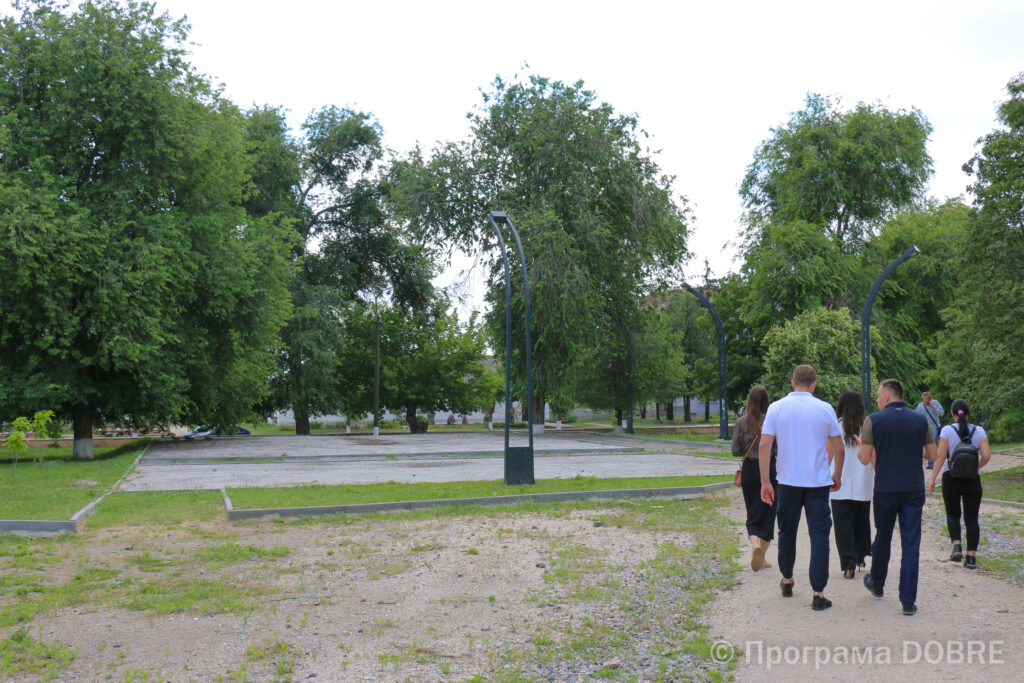
The community already has two projects in various fields for young people, and that’s where DOBRE also helped: the Center for Development of Youth Entrepreneurship and the STEM laboratory at school. With the support from USAID DOBRE, the community implemented its Participatory Budget, which was in demand among residents: people compiled 20 projects annually. Local authorities allocated funds for the most popular ideas. One of these is the climbing wall at the local school. Per current, the Participatory Budget has been suspended due to the war.
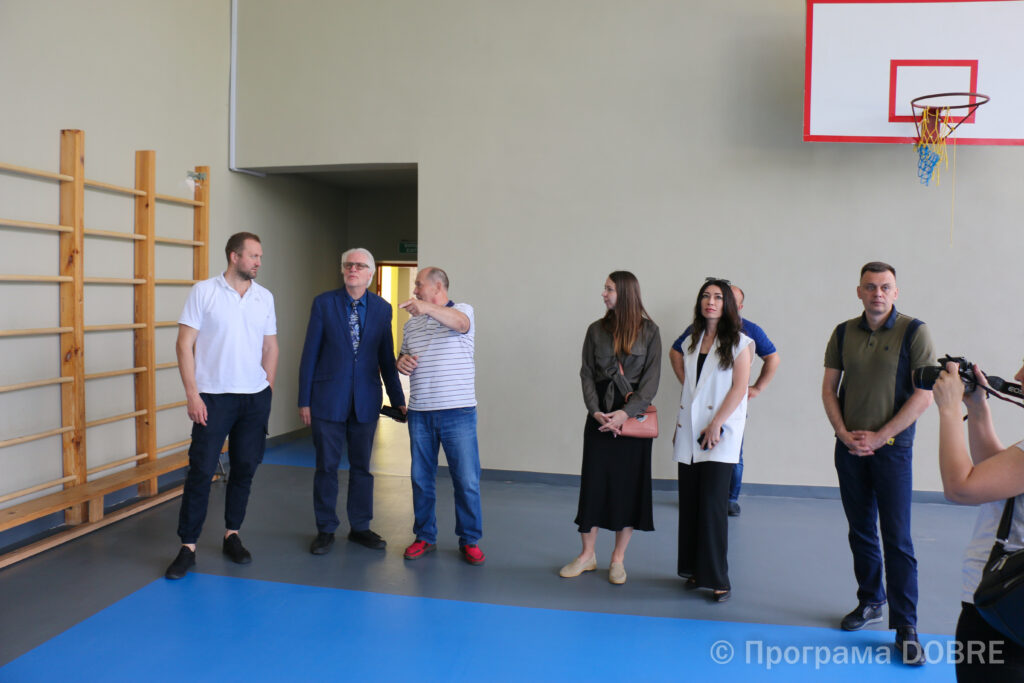
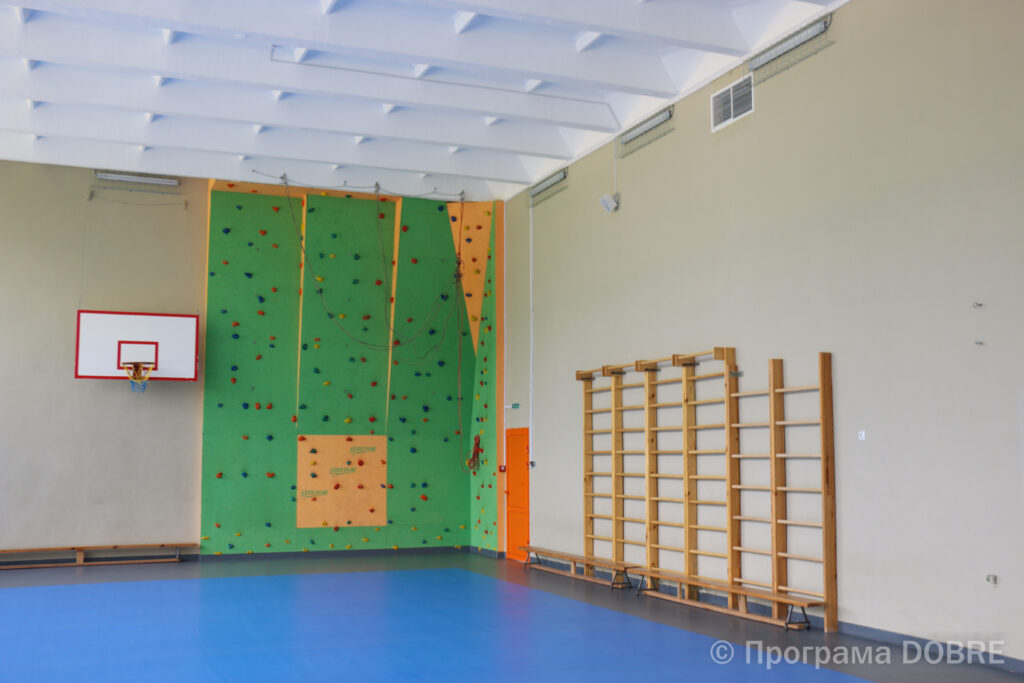
How does the community live now?
“We have been working with the DOBRE Program since 2017. During this period, we improved the stock capacities and technical condition of our communal enterprise, opened several sites, and introduced new work technologies in the community,” says Serhiy Pavlichenko, Head of Vasylkivska territorial community.
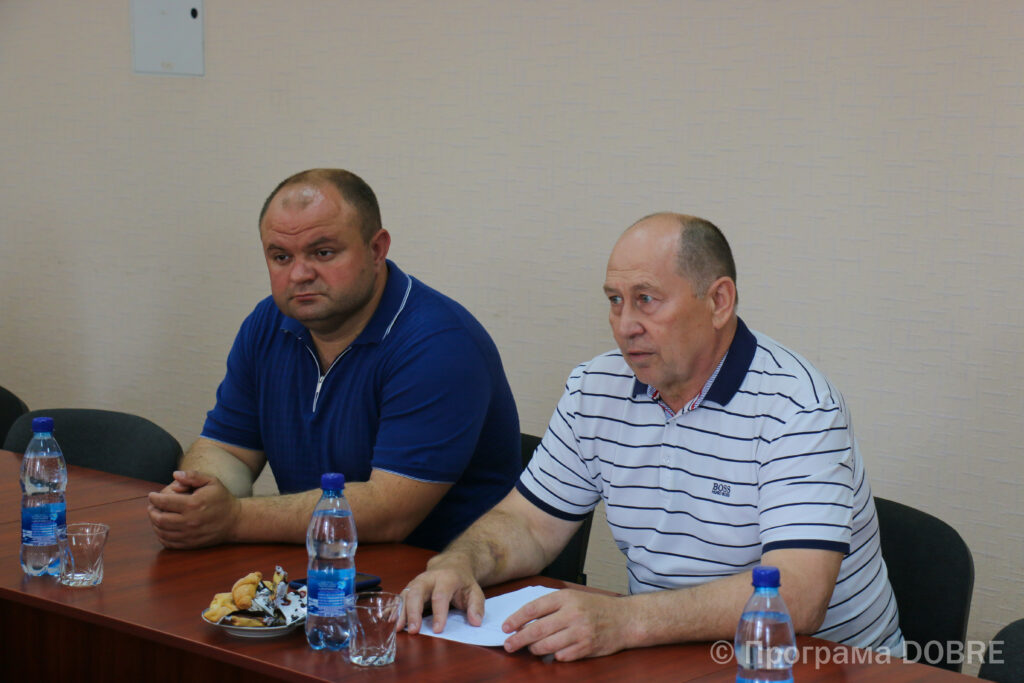
Together with DOBRE, they managed to improve services in Vasylkivska community. For the communal enterprise, the Town Council has purchased equipment for road maintenance in winter. And in 17 educational institutions, they have installed reverse osmosis filter systems, which purify water to the level of drinking water. Institutions cook food with this water because it is completely tested and certified. The community also received five containers of 500 liters and 12 containers of 300 liters to make the reserve, if necessary.
Residential buildings in Vasylkivka and Voskresenivka have centralized technical water supply. And residents of other settlements have their own wells and waterholes. As for now, the explosion of the Nova Kakhovka Hydroelectric Power Plant did not affect the water supply in the community. However, it is unknown whether this will last because the level of the underground water supply can also change over time.
Among today’s priorities of the community is the care for people, who lost their homes due to the war and settled in Vasylkivska community. Officially, there are now 1863 displaced persons. However, some settled with relatives and were not registered.
People with the official status of internally displaced persons got accommodated at the local resident homes, settling in vacant houses or rooms. Today, they all receive humanitarian aid from the community and receive free food at communal institutions. Victoria Varava notes that the administration spends a significant share of the budget on this.
“We do not forget about development and our people. Landscape and territorial improvement, ongoing repairs, we maintain cleanliness in the community. Although priorities have changed, life goes on,” says Victoria Varava.
Currently, in cooperation with USAID DOBRE, in addition to the youth project, they are planning to implement a project for their local economic development. However, all its details are kept secret for now.
And in one of the schools, the Program will help arrange a comfortable shelter. The shelter under the school is spacious and zoned according to the needs of the school’s 660 students. The community is waiting for the delivery of linoleum, which USAID DOBRE will purchase, to complete the arrangement of the shelter.
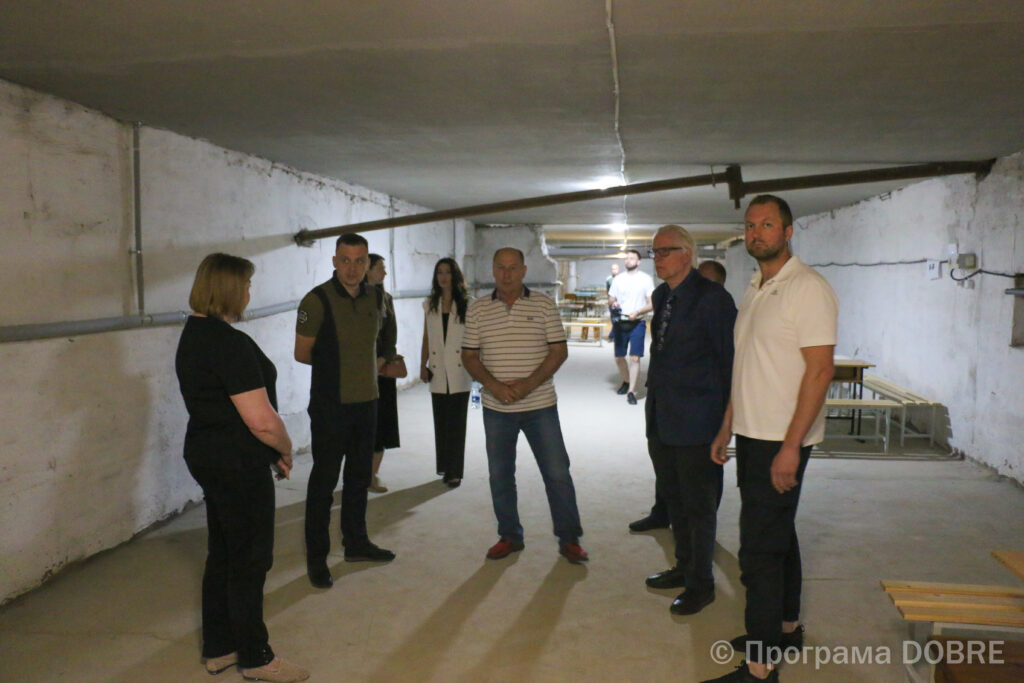
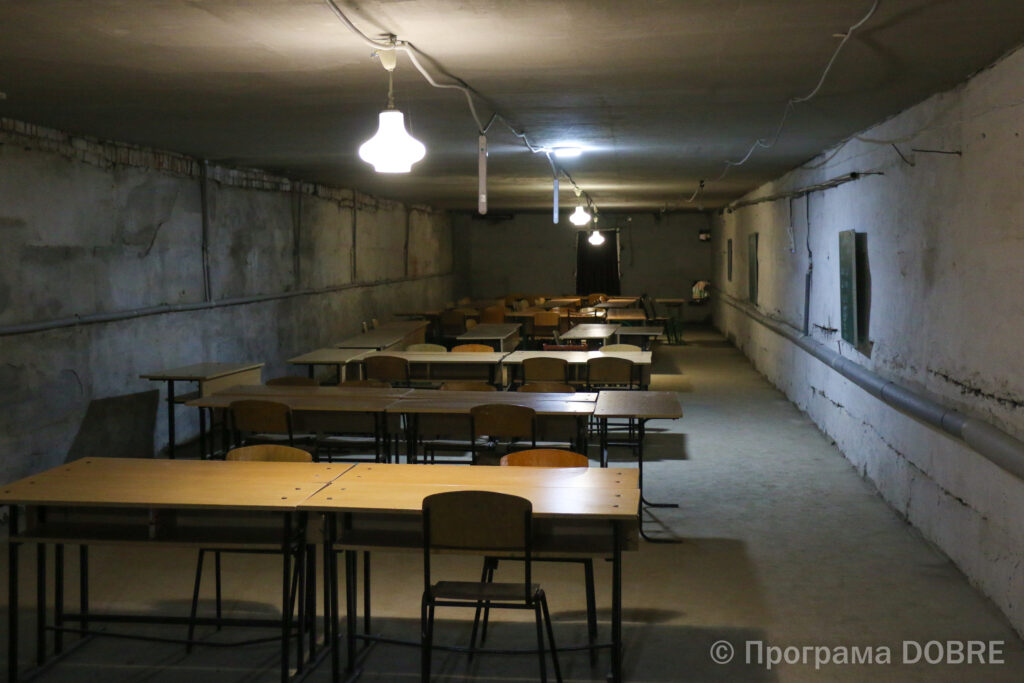
USAID DOBRE will continue to help communities
Brian Kemple, Chief of Party, USAID DOBRE:
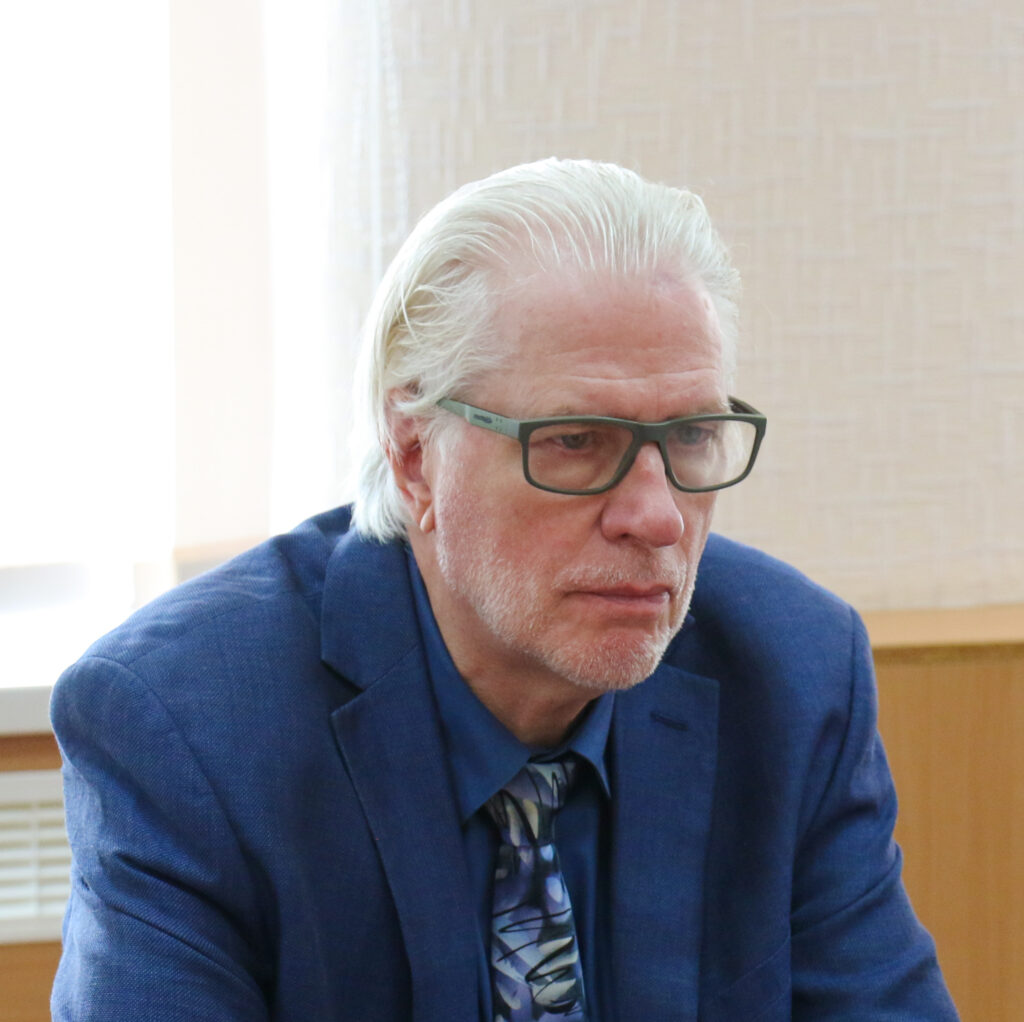
“We visited three of our five partners in Dnipropetrovsk Oblast, with whom we continue to work in the second phase of the program implementation. These are our long-standing reliable partners, and all of them have achieved great success. These communities really care about their citizens, and they have many plans. They are waiting for the end of the war, the disaster that has changed their priorities and needs. They face new challenges. Two communities are suffering greatly from the crisis after the explosion of the Nova Kakhovka Dam. They just run out of water. The main task on our part is to find out what resources we can use to help them. Still, the problem is very multifaceted and complex. We cannot solve everything on our own. We want to find a solution to help them secure water until full recovery, which must occur at higher levels. Anyway, the community has a specific problem that requires specific solutions. We work on them together. Of course, we will continue to work in other strategic areas. These communities are promising, and we are happy to continue our partnership.”
Maksym Burdavitsyn, Deputy Chief of Party, USAID DOBRE:
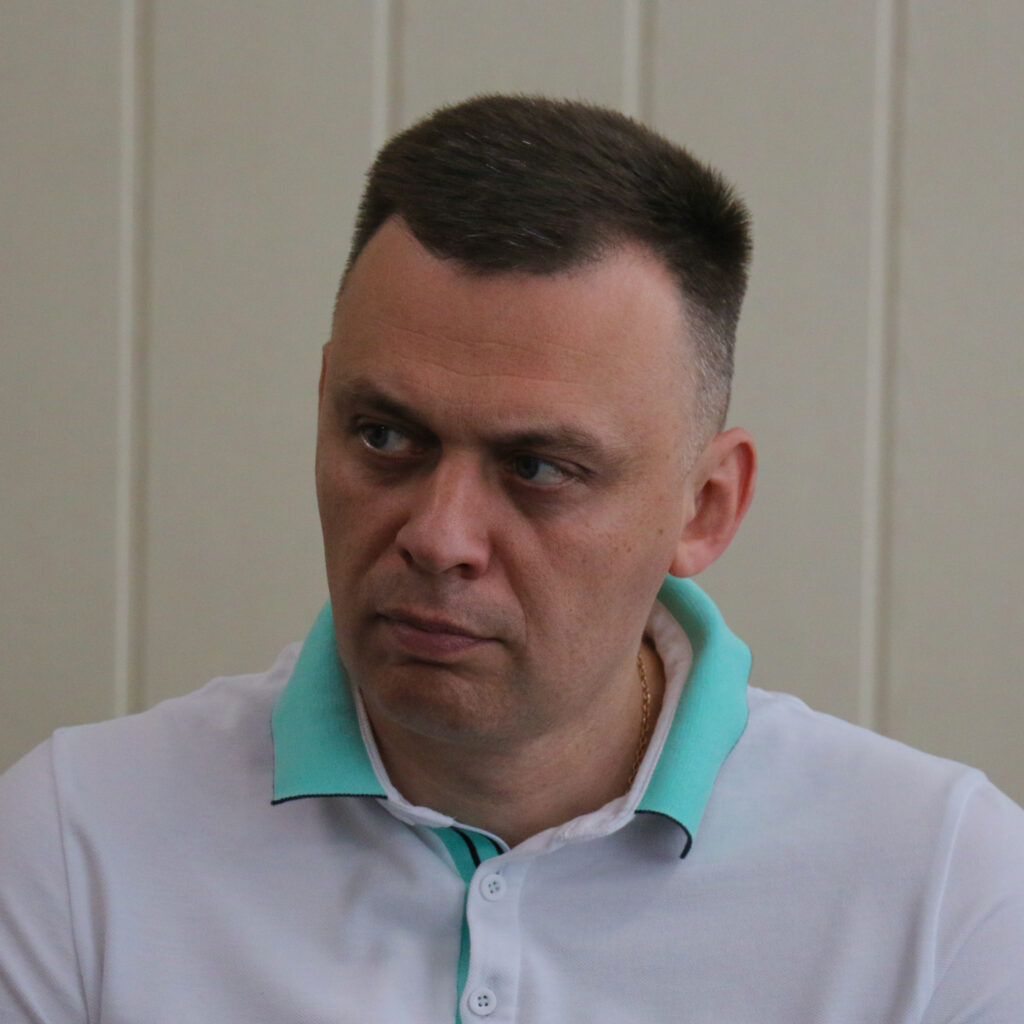
“Traditionally, the Kryvyi Rih region received water from the Kakhovsky Reservoir. Now Sofiyivska and Zelenodolska communities are actually left without water. There are no simple solutions to the water problem. To overcome it, one must solve two or three related problems at the same time. That is why it is necessary to combine all the efforts of the central government, local self-government, international programs, etc. Sometimes the problems are not even financial but technical. For example, there is money, but we do not know how to solve the problem. We need to look for research institutes, redesign the system, and look for new water sources. These ways are technically difficult and expensive, but we will do our best to help communities as quickly and qualitatively as possible. We maintain a close relationship with each community and are ready to allocate an additional resource to solve the water problem. All other projects are moving according to plans: development projects will continue this year.”
***
The USAID Program, “Decentralization Offering Better Results and Efficiency” (DOBRE), is a nine-year program, implemented by Global Communities and funded by the United States Agency for International Development. DOBRE has worked closely with 100 consolidated communities (CCs) in ten Oblasts of Ukraine to help them realize the benefits and meet the challenges brought by decentralization. DOBRE provides technical and material assistance to CCs to help them govern openly and accountably and meet the needs of their citizens; and supports citizens’ active engagement in decision-making and policy making. DOBRE’s support encompasses strategic planning; spatial planning; financial management; public service delivery; local economic development; capacity building; good governance practices; and gender- and youth-responsive policies.
In the period 2022 – 2025, DOBRE will be working directly with at least 60 CCs of Ukraine to help them cope with the consequences of the war, recover and rebuild, and resume their trajectory of positive, sustainable development. Partners with Global Communities in the DOBRE Program Consortium include the Ukrainian Crisis Media Center; the Foundation in Support of Local Democracy, and the Malopolska School of Public Administration at the Krakow University of Economics, Poland.

